
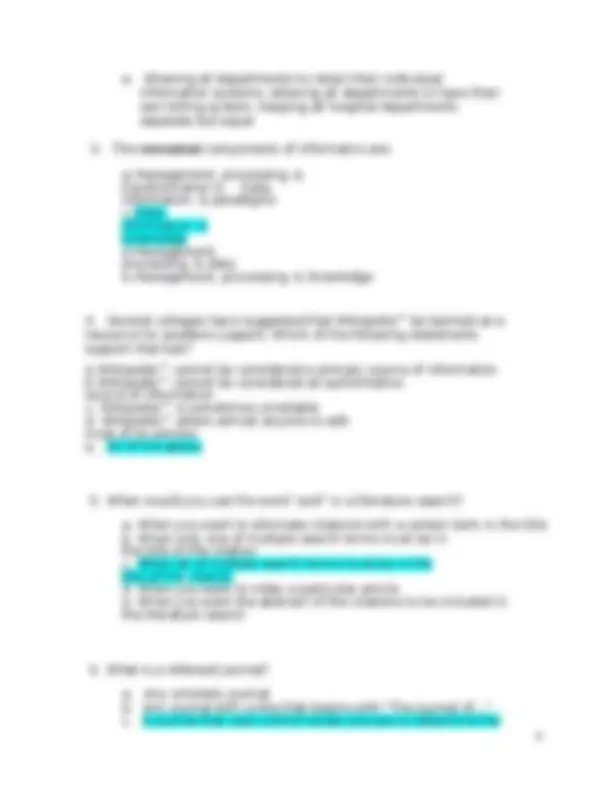

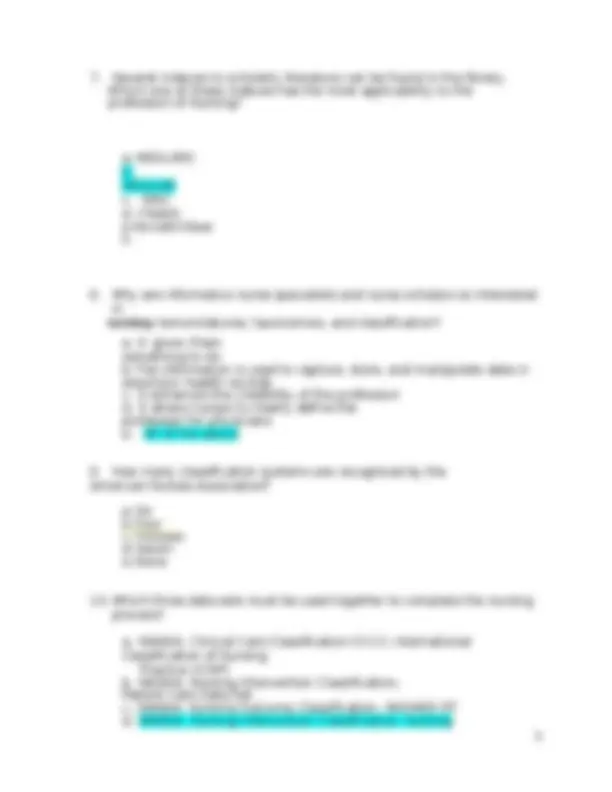


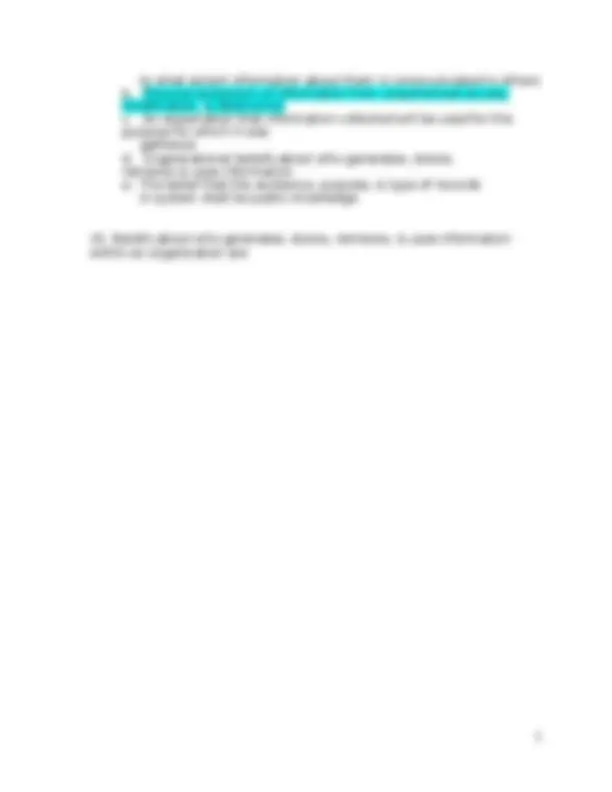
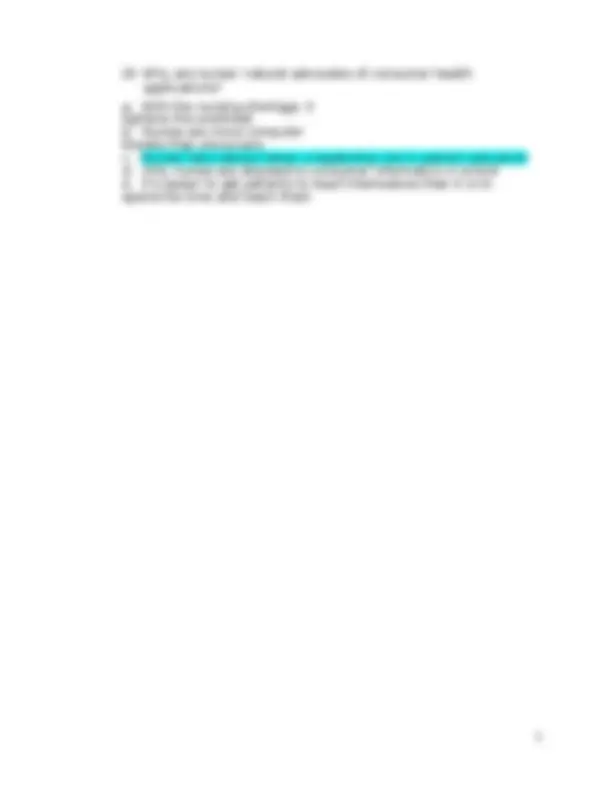
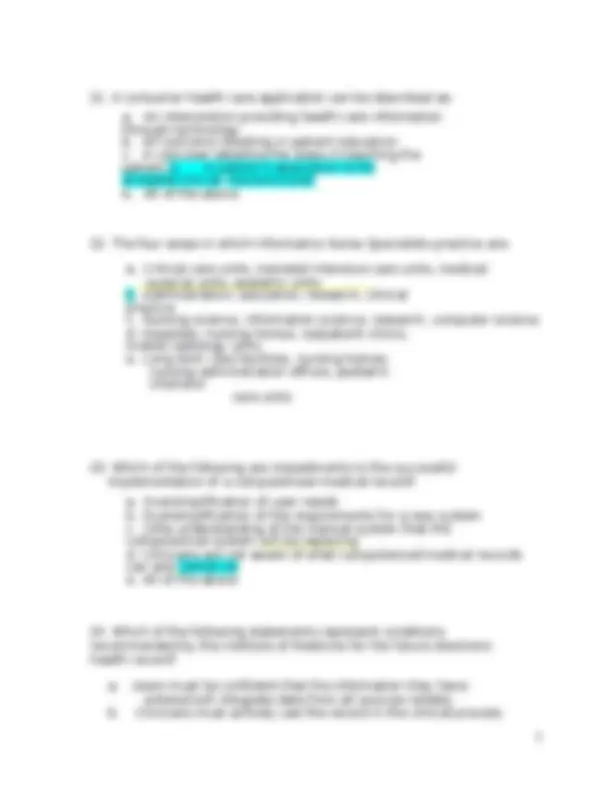


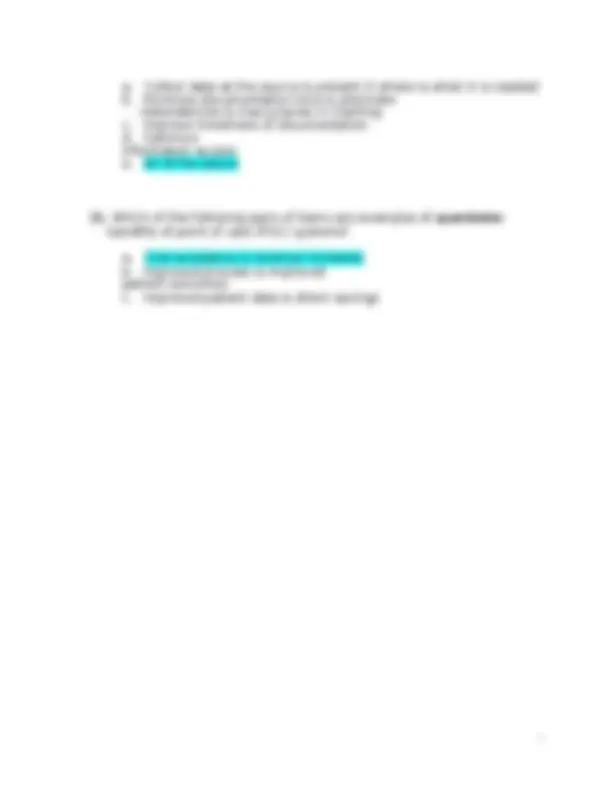








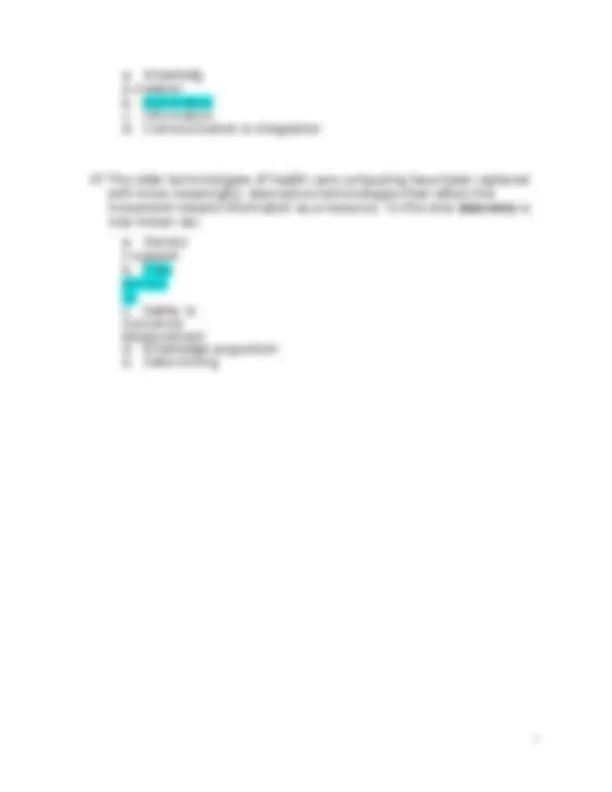
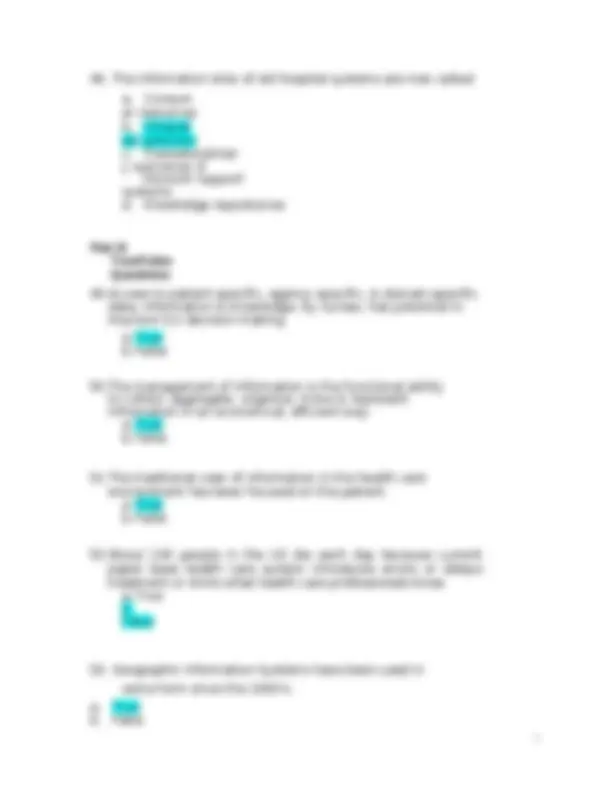


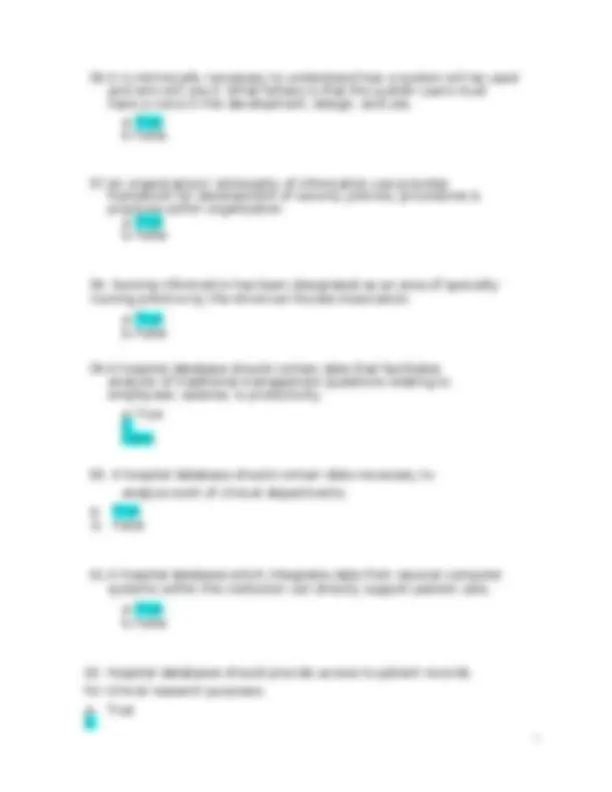


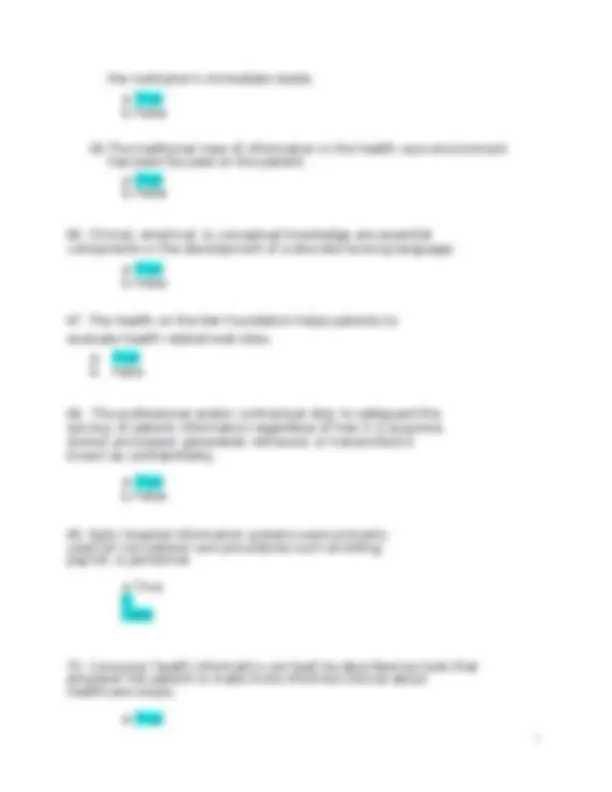

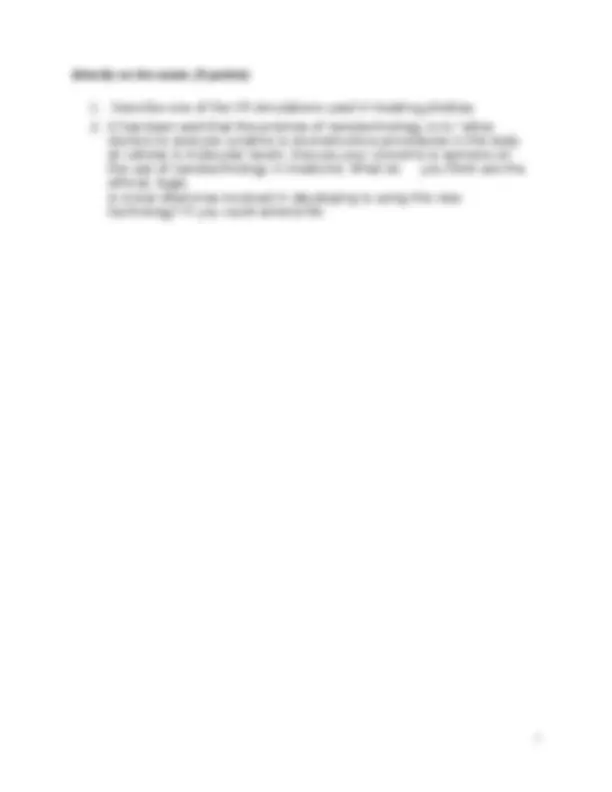



Study with the several resources on Docsity

Earn points by helping other students or get them with a premium plan


Prepare for your exams
Study with the several resources on Docsity

Earn points to download
Earn points by helping other students or get them with a premium plan
Community
Ask the community for help and clear up your study doubts
Discover the best universities in your country according to Docsity users
Free resources
Download our free guides on studying techniques, anxiety management strategies, and thesis advice from Docsity tutors
NURS 120: Introduction to Nursing Informatics Final Examination|AllQuestions Answered Correctly.NURS 120: Introduction to Nursing Informatics Final Examination|AllQuestions Answered Correctly.NURS 120: Introduction to Nursing Informatics Final Examination|AllQuestions Answered Correctly.
Typology: Exams
1 / 38

This page cannot be seen from the preview
Don't miss anything!































Answer all questions directly on the examination. There are no trick questions. Every multiple-choice question has ONLY one correct answer. This examination is worth 250 points. Each multiple choice/true-false question is worth 3.5 points. The single essay question is worth 5 points. Part I: Multiple Choice Questions
model c. Allowing specific departments to retain their individualized information systems, getting all departments to agree to a single billing procedure, realigning traditional departments into a case management model d. Synthesizing different types of information into a cohesive whole, getting all departments to agree to a single billing procedure, keeping all hospital departments within the traditional vertical structure
suitability and worth of articles received for publication d. Any journal that can be found on Ohio Link or through Kelvin Smith Library e. Any journal edited by someone with a Ph.D.
d. Formal education & practical experience in using computers;
1 to what extent information about them is communicated to others b. Physical protection of information from unauthorized access, modification, & destruction c. An expectation that information collected will be used for the purpose for which it was gathered d. Organizational beliefs about who generates, stores, retrieves & uses information e. The belief that the existence, purpose, & type of records in system shall be public knowledge
1 known as the organization s: a. Mission for information use b. Philosophy of information use c. Vision of information use d. Framework for information technology development and implementation e. Legal-ethical responsibilities for information use and storage
1
1
e. All of the above
a. A computer mapping & analysis system that allows large quantities of information to be viewed & analyzed within a geographic context b. A system which allows researchers to study the distribution of disease in a neighborhood c. System which allows the community health nurse to locate a patient’s home without using a map (a Global Positioning System) d. A system which allows research about infant mortality in a particular census tract e. All of the above
a. Collect data at the source & present it where & when it is needed b. Minimize documentation time & eliminate redundancies & inaccuracies in charting c. Improve timeliness of documentation d. Optimize information access e. All of the above
31. Which of the following pairs of items are examples of quantitative benefits of point of care (POC) systems? a. Cost avoidance & revenue increases b. Improved process & improved patient outcomes c. Improved patient data & direct savings
d. Improved patient outcomes & direct savings e. Potential savings & improved patient satisfaction
32. Which of the following pairs of items are examples of qualitative benefits of point of care (POC) systems? a. Improved process & improved patient outcomes b. Cost avoidance & potential savings c. Improved process & cost avoidance d. Improved patient outcomes & improved patient data e. Revenue increases & improved patient data 33. To be able to effectively implement a point-of care system, you need all of the following except: a. Clear goals & objectives b. A prototype system as a model c. Integration with other departments within the institution d. A team approach to system development